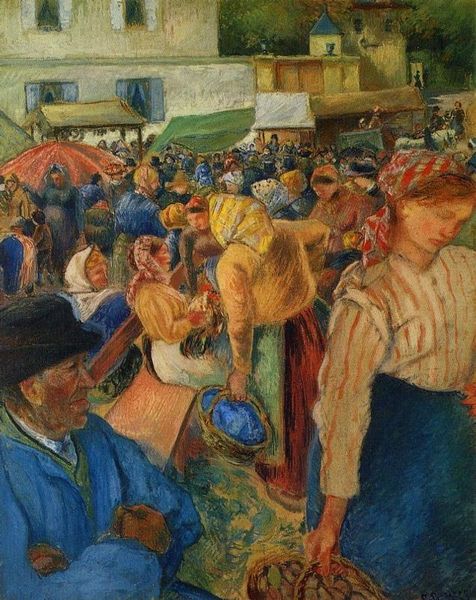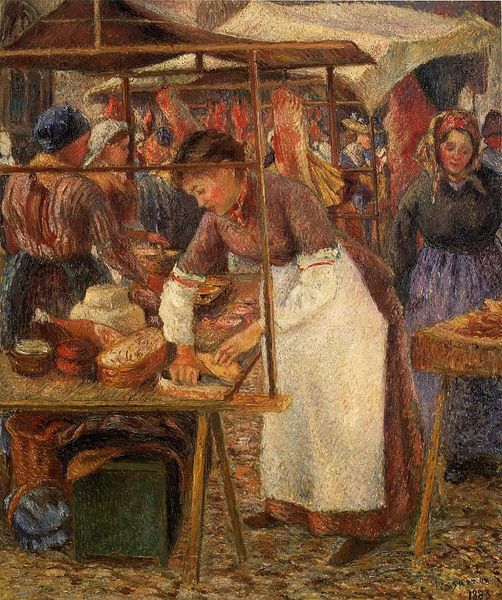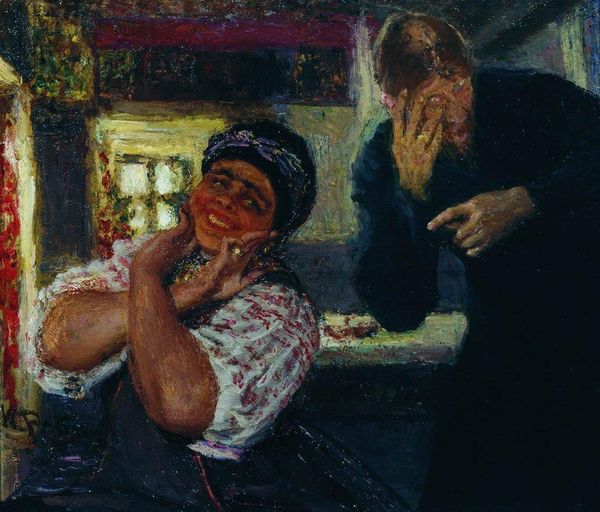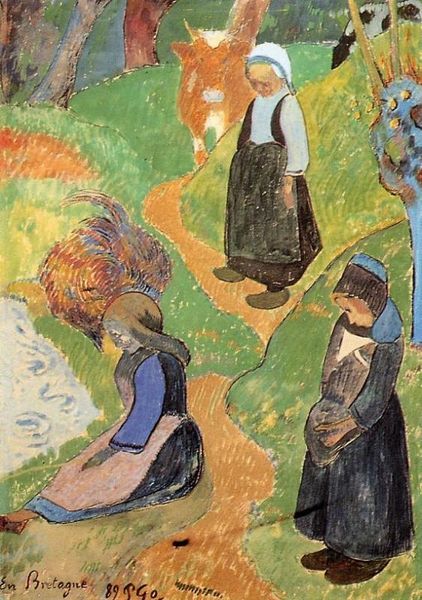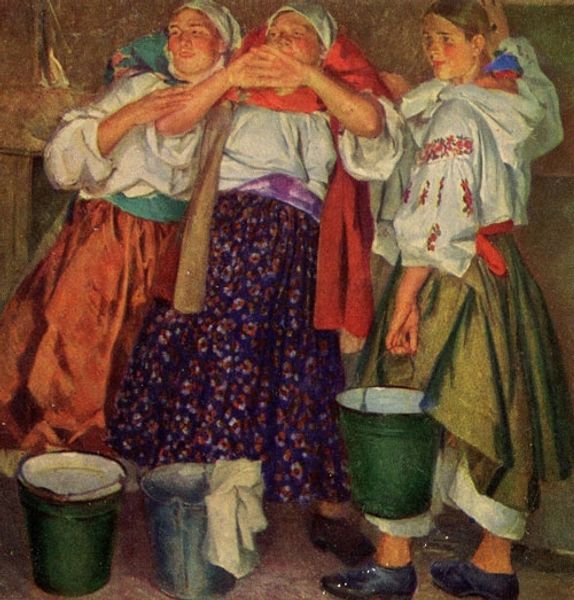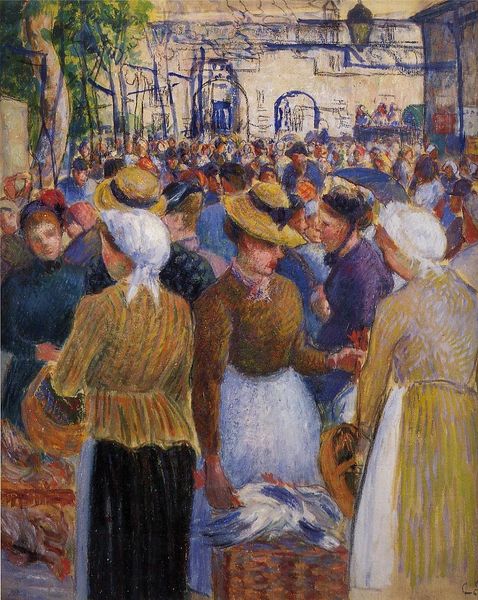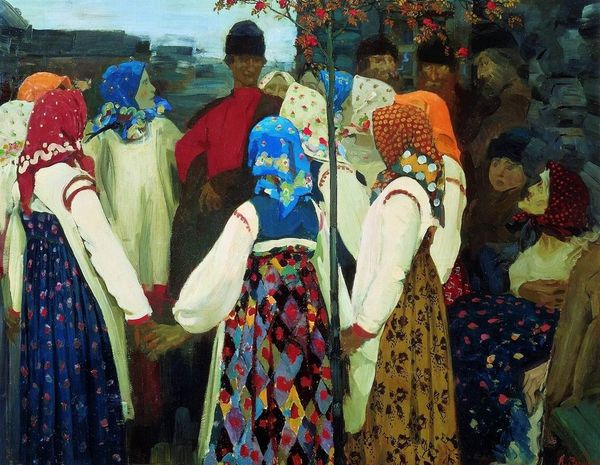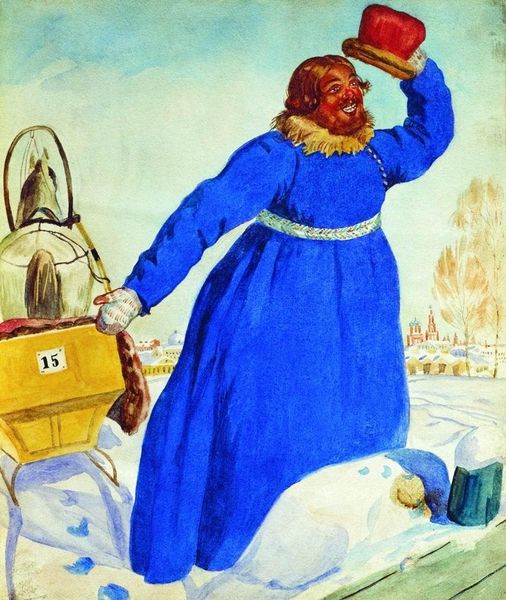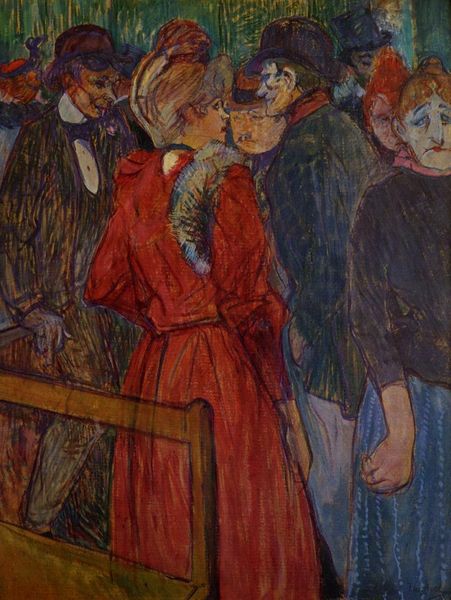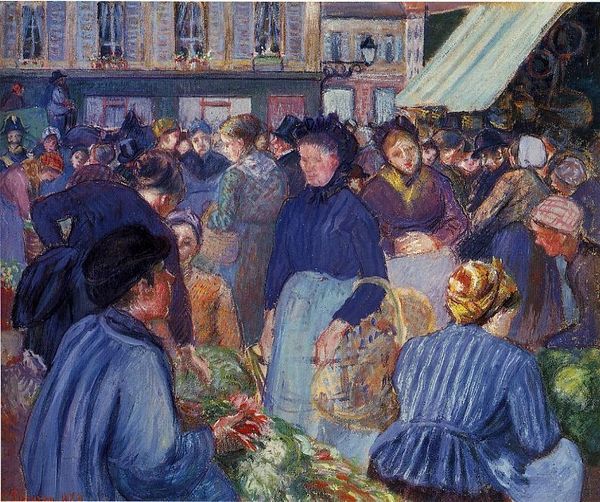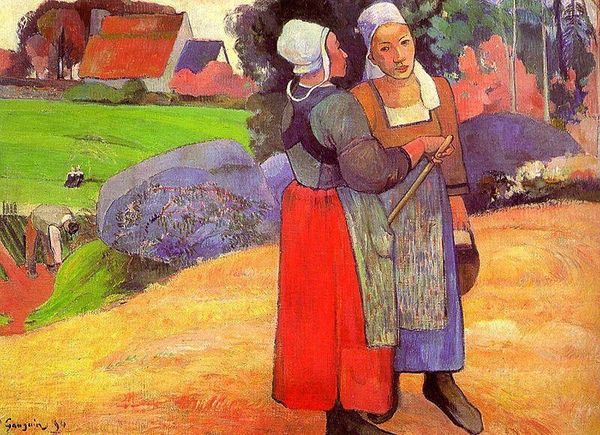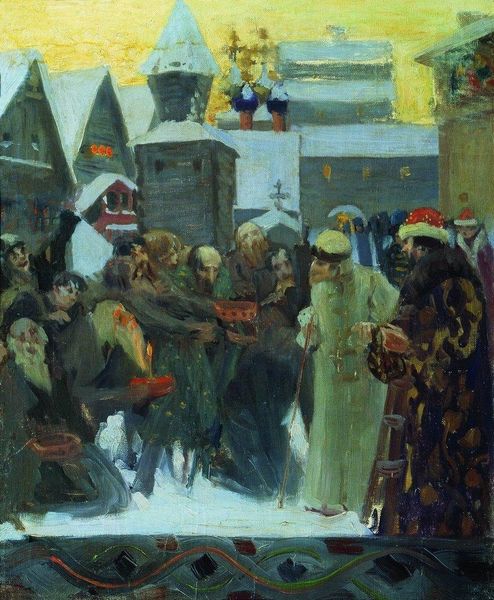
plein-air, oil-paint
#
portrait
#
impressionism
#
plein-air
#
oil-paint
#
landscape
#
oil painting
#
france
#
painting painterly
#
cityscape
#
genre-painting
Dimensions: 81.7 x 65.7 cm
Copyright: Public domain
Curator: Here we have Camille Pissarro’s "The Poultry Market at Pontoise," painted in 1882, now residing here at the Norton Simon Museum. Editor: My immediate impression is one of organized chaos – a vibrant, almost tactile rendering of everyday life. It feels surprisingly modern. Curator: Absolutely. Note Pissarro's masterful use of brushstroke; small, broken touches of color applied using the plein-air technique. He’s less interested in strict representation, more focused on the play of light and shadow on the figures. Observe how he crafts depth within the crowd, even at a distance. Editor: True, but I think the socio-economic aspect is also at play here. Market scenes weren't just about capturing light. They were vital social spaces, especially for women. Consider the roles available to them in 19th-century France: trade was often essential to economic survival. These brushstrokes hint at unseen stories, the daily hustle and the community built on exchange. Curator: A fair point, but also consider the abstract qualities. See how the composition itself – the placement of figures, the receding perspective – guides the eye towards a sense of dynamic, yet ordered movement. Editor: I read that dynamism as directly connected to gender and class. The women in the foreground are monumental in their positioning. It's a purposeful, artistic assertion of their agency within this micro-economy. Are they buyers, sellers, or both? Pissarro asks us to consider the nuances of these un-famous individuals. Curator: And within all that, there’s the beauty of the brushwork, the subtle gradations of tone… It exemplifies the aesthetic sensibilities of Impressionism. Editor: Exactly. Pissarro is using the techniques of Impressionism to comment on social hierarchy and labor! It makes us consider the realities of life for working-class women and their communities at the time. Curator: Ultimately, it demonstrates how even seemingly simple scenes are crafted with deliberate attention to formal construction and compositional principles. Editor: And by investigating social contexts we add new and necessary layers to the experience. These layers remind us that visual language reflects a complex world, where beauty is rarely divorced from the circumstances of its creation.
Comments
No comments
Be the first to comment and join the conversation on the ultimate creative platform.
